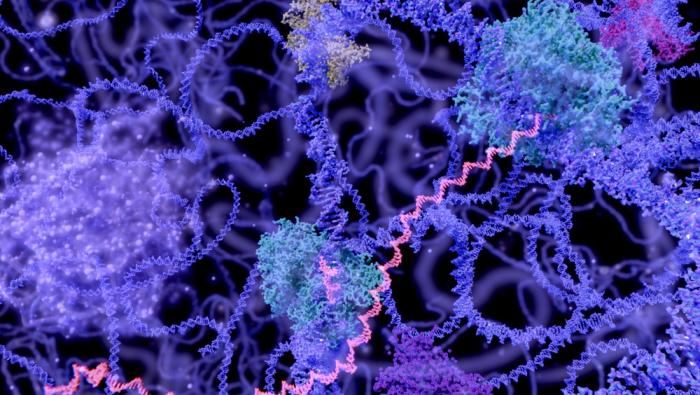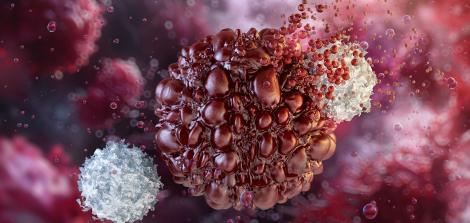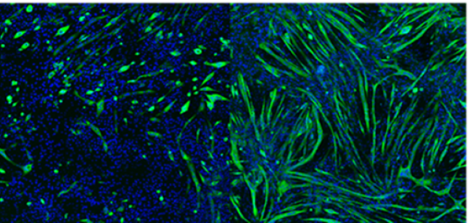What is RNA editing?

The FDA, the American Food and Drug Administration, approves about 40 new medications per year. Therefore, the announcement of a new drug approval doesn’t usually make headlines. But the drug approved on December 8, 2023 to treat sickle cell anemia appeared in headlines worldwide. The reason: it is the first medication that edits and modifies a person’s DNA. This is very exciting news for people who suffer from sickle cell anemia, because the medication corrects the genetic problem in the DNA that creates the disease, thereby solving the issue from the root cause.
What is genetic editing of DNA and what is the big news that specifically RNA editing could be heralding? We talked to Professor Erez Levanon from the Dangoor Centre for Personalized Medicine at Bar Ilan University in order to gain a better understanding of what happens behind the scenes in the world of personalized medicine.
The Editor in Chief: Mr. ADAR
Professor Levanon was exposed to the potential of RNA editing over a decade ago, when he was a young student sitting in lectures by Professor Shulamit Michaeli, director of the Dangoor Centre for Personalized Medicine and Vice President of Research at Bar Ilan University. Today, he is the head of the computational biology department at the Faculty of Life Sciences at the university, and he identifies potential RNA editing sites.
Erez, let’s start from the beginning: what is RNA editing?
“DNA includes all of a person’s hereditary information, and it is composed of a long chain of organic material called nucleotides, or simply: bases. In total, there are four primary bases in DNA: A, C, G, and T. Their sequence, which is three billion bases in length and includes over twenty thousand genes, is responsible for our traits and all of the vital operations that take place in the body. DNA editing is a manipulation that we perform in various ways in order to change certain letters in the sequence, which creates a change in the DNA. In contrast with DNA editing, which is performed by an action that comes from outside of the body, RNA editing is something that the body itself knows how to do.
Meaning, the body knows how to correct RNA on its own, but not DNA?
“Yes, I’ll explain. RNA is a copy of the information in the DNA whose purpose is to ‘carry out‘ the instructions that appear in the DNA and to supervise the operations performed in the cell. RNA, like DNA, is composed of a four-letter code: A, C, G, and U, and it turns out that the body itself knows how to edit RNA, by switching the letters.”
And scientists are essentially trying to initiate RNA editing?
“Exactly. There is an enzyme called adenosine deaminase acting on RNA, or ADAR for short, that can function as the RNA ‘editor.’ The process is complicated, but simply put, what ADAR can do is take one letter from the RNA sequence and turn it into a different letter. Practically speaking, it can turn the letter A into the letter G.”
When does this ADAR enzyme “decide” to perform genetic editing in our bodies?
“Most of the editing by the ADAR enzyme takes place in RNA of a specific type that is referred to as RNA that is not encoded into protein. We must understand that RNA is a very interesting molecule. In most cases, when we talk about RNA, we are referring to a very specific part of it – the part responsible for creating proteins in the body according to the ‘instructions’ of the DNA. But this type of RNA that is referred to as a ‘messenger RNA encoded into protein’ is only one type, and essentially just a small part of the RNA. The ADAR enzyme usually does not perform genetic editing on this type of RNA, rather on a different type – RNA that is not encoded into protein. In the DNA, and in the RNA, which is a copy of it, there are parts that are very similar to viruses. This is exactly where ADAR comes into the picture. It identifies these areas in the RNA and changes part of the nucleic acids.”
Why does it do that?
“The worst thing that can happen to a cell is a viral attack. Therefore, we have cells from the immune system that are like police officers, patrolling the blood vessels, and it is their job to constantly identify whether there are cells that are being virally attacked, because if so, they must react immediately and destroy them. If these police officers are wrong, the result is that the body attacks itself, and that’s obviously a problem. The issue is that our genome is composed of many regions that look like viruses, and these are liable to activate the immune system needlessly, against healthy cells. So, our protein, the ADAR, which is our brave editor, knows how to change some of the A bases into G in those regions, and then the body doesn’t send a signal that it is under a viral attack.”
So, if there is a problem with the ADAR and it doesn’t work, is the body liable to attack itself?
“In the lab, we showed that in some of the autoimmune diseases, which are diseases in which the cells of the immune system attack the body for an unknown reason, there are more of the structures similar to viruses in the RNA, because the ADAR does not repair them. With cancer, the opposite happens. The ADAR is too active, and then the cells of the immune system are paralyzed, so cells that need to be destroyed are not attacked and they begin to multiply and spread.”
Head to head: CRISPR vs. ADAR
Erez is involved in computational biology. In his laboratory at Bar Ilan University, the members of his lab identify the edited sequences of RNA on a computer and find the sites where genetic editing is performed by ADAR. Based on this information, they are developing a tool that will help evaluate the potential of different regions of the RNA to undergo editing in order to repair mutations that cause diseases. “Personalized treatments are developing quickly today, so these tools are in high demand. The ability to make a genetic change in order to heal illnesses, and to adapt treatment to the patient and their specific genes is arousing much interest. The question is which diseases can be treated in this way. Computational biology helps us find the answer.”
Today, there is already a successful method for DNA editing - CRISPR. What is the advantage of identifying sites for RNA editing?
“First of all, there is no contradiction between the two, and there is room for both. There is unfortunately no shortage of diseases in the world, and genetic editing can be done on both DNA and RNA. The question is which method to choose. Today, there are quite a few methods for genetic editing under development. Someone could be born with a mutation, meaning a change in the sequence of letters in the DNA, that in this case causes a disease. The CRISPR/Cas9 technology works like scissors that can cut segments of DNA. The CRISPR system is based on mRNA that identifies the DNA segment that needs to be cut, and then the Cas9 enzyme cuts it. But CRISPR comes with several disadvantages. The first is that this system is derived from bacteria. Scientists managed to change it so that it can be introduced into the human body, but it is still a foreign protein after all, so the immune system often reacts by rejecting the CRISPR.”
And how can the correction be done more simply in RNA?
“What we say – and when I say we, I also mean the labs who are collaborating with us on the research, of Professor Shay Ben-Aroya of Bar Ilan and Professor Eli Eizenberg of Tel Aviv University – is that this enzyme that we are working on, ADAR, which knows how to do the editing, already exists in our cells. Therefore, there is also more of a chance that when an ADAR-based medication enters the body, the body won’t reject the treatment.”
What are the other advantages of RNA editing versus DNA editing?
“One of the additional problems with CRISPR is that it performs many activities that are beside the main purpose, what is referred to as ‘off-target editing.’ If there are regions in the genome that are significantly similar to the sequence that we want to edit, they might be unintentionally edited too, and then we are left with mutations in the DNA, which highly increases the chances of cancer.”
RNA doesn’t do off-target editing?
“It does, but RNA is a temporary molecule that the body creates as a copy of the DNA in order to perform certain operations, and that’s it. Therefore, RNA editing usually leads to temporary changes, to the point that the RNA molecule decomposes after it finishes its job. If there are side effects of a RNA editing treatment, it can be halted without causing permanent damage.”
If the genetic change is not permanent, why is RNA editing better than regular medications?
“The point is that these treatments are stronger than medications. Medication treats the symptoms of the disease. If there is inflammation in the body, you can take medication that reduces the inflammation. But these types of treatments actually repair the disease. Like DNA editing, as soon as the RNA mutation is gone, the disease is gone too. It’s very strong.”
The vision: To create helpful mutations and engineer astronauts
So at this point, it’s all at the theoretical stage? Can medications be developed using computational tools?
“We have a project that we are working on for a genetic eye disease, with Professor Eyal Banin and Professor Dror Sharon, ocular disease researchers from Hadassah Ein Karem in Jerusalem. We are working on developing a RNA-editing based drug for this rare disease to help several patients. We have already performed the first experiments on cell cultures, and now we need to test the medication on mice. Eventually, our hope is to treat several patients of Professor Banin and Professor Sharon. We brought the theoretical part, but they are doing most of the work. The doctors at Hadassah and their teams at the labs are developing the drug that will eventually be injected into the patient. We are also collaborating with Sheba Hospital on other rare diseases.”
How many diseases can be healed using ADAR editing of the A to a G?
“Not all genetic editing is useful to the same degree. ADAR, for example, can do two things: repair mutations where the A needs to be replaced by G, and to save a stop codon – a sequence that tells the body to completely stop the process of creating proteins, so that the body will still create something, instead of nothing. That is why it is so useful. Replacing C with T, by the way, is also very useful.”
This approach of preferring to repair something over nothing at all could have a deep impact on the medical world, especially on personalized medicine for diseases that have no solution today.
"It's possible to achieve even more remarkable feats with RNA editing. We can not only repair mutations, but also create them. If we identify a beneficial genetic variation, we can introduce that specific change. For instance, a Canadian family discovered a mutation in their genes leading to exceptionally low cholesterol levels. By identifying such useful mutations, we can potentially create them in others."
But isn’t it dangerous to play with genetic editing in the human body?
“That’s exactly the issue. DNA editing is relatively dangerous, and if it turns out for whatever reason that the mutation shouldn’t be created in every person, it will not necessarily be possible to repair the damage done to the patients. With RNA, everything is versatile. We can begin a treatment, stop, increase the dosage, decrease the dosage. That’s the advantage of RNA editing.”
Is this even ethical?
“I believe that in any event, genetic editing will one day be a regular procedure, and that we will eventually be performing genetic editing on fetuses, which is currently prohibited under medical ethics laws. There are greater ethical issues with DNA editing because it is permanent. Therefore, I think that even when medications based on DNA editing work, it is worth trying them with RNA editing first, in order to verify that there are no problems, and then decide whether to move on to the stage of DNA editing.”
What else lies ahead in the future?
“Another direction that we are considering, which is pretty grandiose, is to enable humans to live in outer space. Humans are not meant to live in space for an extended period of time. Our bodies are adjusted for life on earth and from research on astronauts who returned from space, we know that their bones were weakened, heart rates drop in space, and so forth. We can consider an effective, ethical type of genetic engineering for NASA astronauts using RNA editing, in order to send them to space assignments and then return their bodily functions to normal when they get back to earth.”
Last Updated Date : 12/11/2024








